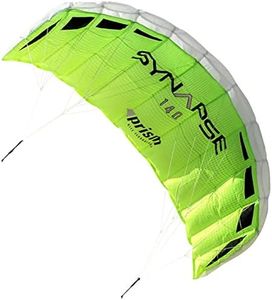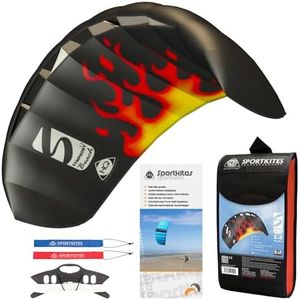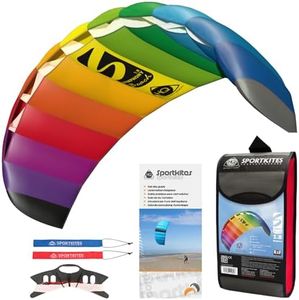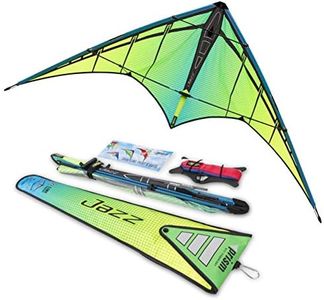We Use CookiesWe use cookies to enhance the security, performance,
functionality and for analytical and promotional activities. By continuing to browse this site you
are agreeing to our privacy policy
6 Best Trainer Kite
From leading brands and best sellers available on the web.Buying Guide for the Best Trainer Kite
Choosing the right trainer kite is essential for newcomers who want to learn the basics of power kiting and kite control effectively and safely. A trainer kite is typically smaller and less powerful than full-sized kites used in kiteboarding, making it perfect for practice on land before moving to the water or bigger kites. When selecting a trainer kite, you'll want to consider several important features that affect how easy and enjoyable it will be to learn. Matching the kite's characteristics to your goals, physical size, and local wind conditions ensures both fun and safety as you build your skills.Kite Size (Surface Area)Kite size refers to the surface area of the kite, typically measured in square meters. This specification influences both the power the kite can generate and how manageable it will be in different wind conditions. The size range for trainer kites is usually from around 1.5 to 3.5 square meters. Smaller kites (1.5–2.0 sq.m) produce less pull, making them ideal for younger users, beginners, or for use in stronger winds. Medium-size kites (2.0–2.5 sq.m) strike a balance between responsiveness and manageable power and are well-suited to most adults in moderate winds. Larger kites (2.5–3.5 sq.m) are more powerful and can be useful in lighter wind areas or for larger individuals, but they require more control skill. Choose a size that matches both your body weight and typical wind conditions where you will fly, aiming for safety and easy handling.
Number of LinesTrainer kites typically come with either two or three lines, and this determines how the kite flies and how easy it is to relaunch. Two-line kites are simple and intuitive, allowing you to steer by pulling one line or the other, which is great for basic kite control and fun. Three-line systems add a third line for easier relaunching and stopping power—if you let go of the control bar, the kite often drops safely. Three-line models offer more safety and are also helpful for learning more advanced kite control, making them a good choice if you plan to progress to kiteboarding. If you’re just starting and want simplicity, a two-line kite works well; if you want more safety and practical learning, opt for three lines.
Kite Shape (Foil or Inflatable)Trainer kites are most commonly foil kites, but some inflatables exist. Foil kites are made of fabric cells that fill with wind, making them light, durable, and easy to pack, with no need for inflation or rigid spars. They are well-suited for beginners due to their simplicity and resilience in crashes. Inflatable kites, while rare among trainers, have an air-filled leading edge and generally simulate the feel of full-size kites used for kitesurfing. Choose a foil kite for land practice and ease of use; consider an inflatable only if you’re preparing specifically to move quickly to water-based kiting.
Control Bar FeaturesThe control bar is what you use to direct the trainer kite. Features can include line winders, comfortable grips, safety leashes, and sometimes even color coding for easy distinction between left and right sides. Longer bars provide more leverage and slower, more stable steering; shorter bars make the kite turn faster. For beginners, a well-padded, easy-to-hold bar with clear safety mechanisms is most valuable, as it helps avoid hand fatigue and increases safety while you learn.
Wind Range SuitabilityEvery trainer kite is designed for use within a certain wind speed range, usually indicated in knots or miles per hour. This spec is crucial for safety and performance—a kite that’s too large for the available wind or vice versa will be either hard to control or underpowered. Lighter kites perform better in low wind, while smaller kites are safer in strong wind. Consider the average wind speed at your flying location, and choose a kite that works well within those typical conditions for reliable and safe practice.
Build Quality and MaterialsTrainer kites are made from ripstop nylon or polyester fabrics, with lines and stitching designed to withstand repeated use and the occasional crash. Good build quality ensures a longer lifespan, smoother performance, and greater safety as you learn. Kites with reinforced edges, quality stitching, and durable bridles are preferable, especially if you’ll be learning in rougher areas. This spec is important if you want a kite that will last and remain safe with lots of use and possible mishandling by beginners.





